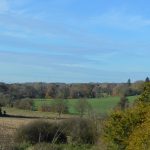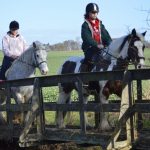The following paragraph has been agreed, subject to amendment and confirmation, for inclusion into the Neighbourhood plan.
This complements the much more detailed work that is ongoing to independently and formally establish the ‘significance’ of the valley, the overall objective being to build up as many layers of defence as possible against potential threats to the Old Church and the valley.
“The Rib valley in the parish of Thundridge is an exceptionally unusual example of unbroken activity and occupation for at least two millennia from Neolithic times, in a landscape that has remarkably not been disturbed, developed or archaeologically investigated and has great historic significance and unexplored potential. It also remains an ecologically significant green corridor, green belt and amenity for physical and mental health of the district and well beyond.
The area is abundantly rich just in amateur surface finds (see https://finds.org.uk/database/search/results/q/thundridge) and professional maps produced for Ware North development)
There is evidence of: Neolithic finds; Iron Age hilltop and rare pre-Christian settlements; ancient routes and crossing above Fabdens near Rayleigh; Roman finds, habitation and burial mounds; place names dating back to Anglo-Saxon; positioning of the frontier between Viking and Anglo-Saxon areas of control; numerous medieval and post-medieval sites and finds; intact Georgian and Victorian estate and tenant farming and a Boer and WW1 training range and Armoury at Thunder Marsh.
There are several key views, with historic as well as contemporary relevance: from the ‘Mountains’ bend in river on Hertfordshire way: North across ‘The Range’ at Thundridge marsh and West to Cold Christmas cottages: from footpath on Thundridge Hill across old Church to Youngsbury: along the Ashridge on Harcamlow Way: from Ashridge to Timber Hall: from Havens End to Sawtrees on Harcamlow Way. In this context, it is also important to keep development below the South horizon.
‘Thundridge Old Church’ is a Grade 2* listed 15th C tower containing 12th century features and located in a scheduled monument site of Little St Mary’s, of Saxon origins; from all directions it is an iconic local landscape feature and eye catcher (from Thundridge and the A10 bypass to the West; Thundridge Hill to the South ; Youngsbury to the North and Fabdens to the East).
The valley encompasses and is part of the historic designed Capability Brown Georgian landscape of Youngsbury, a ‘Registered landscape’ with Historic England, with a variety of Grade II and Grade II* listed features
The area contains woodlands and parklands continuously managed over millennia into living memory
The Rib is one of only 200 chalk rivers known globally and a habitat ‘recognised as a priority habitat for protection under the UK Biodiversity Action Plan’ https://www.oliverheald.com/campaigns/chalk-streams
It’s function as a green belt and green ‘lung’, is ever more important after Ware North development approval, recognising the immense value of this green space for the physical and mental good health of Thundridge, Ware and E.Herts residents and special interest groups from far afield.
It is a well-known and used leisure corridor for walking, cycling (Womens Tour cycling race 2015), hiking, riding, fishing, bird watching, photography and more.
It hosts the Hertfordshire way (E/W), Harcamlow Way (N/S) and Ashridge bridleway.”













